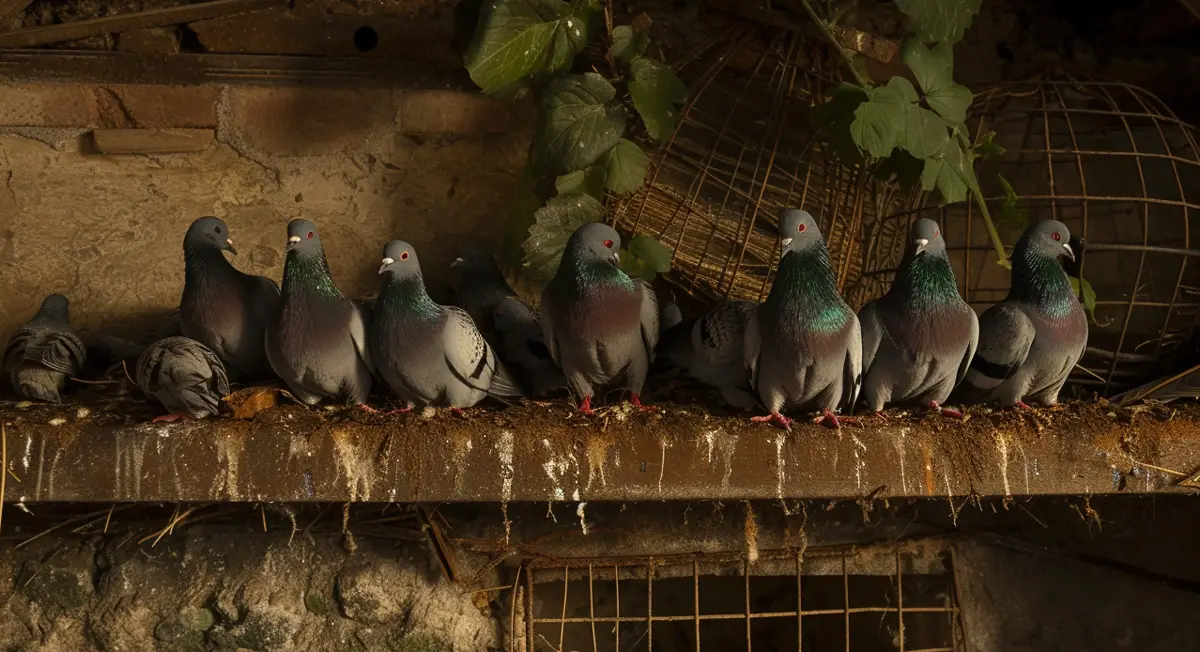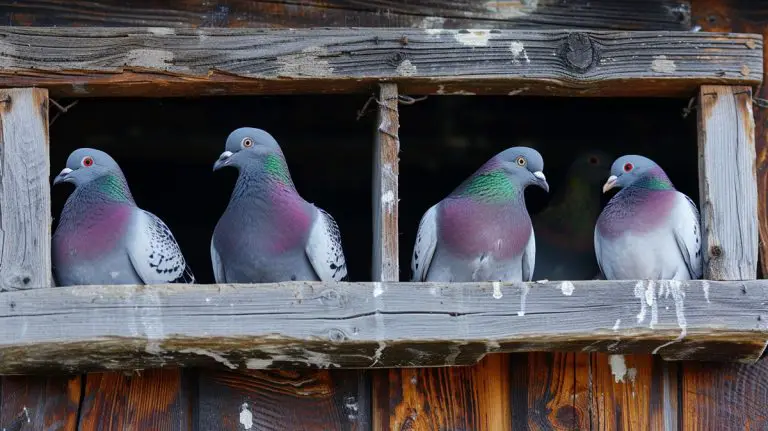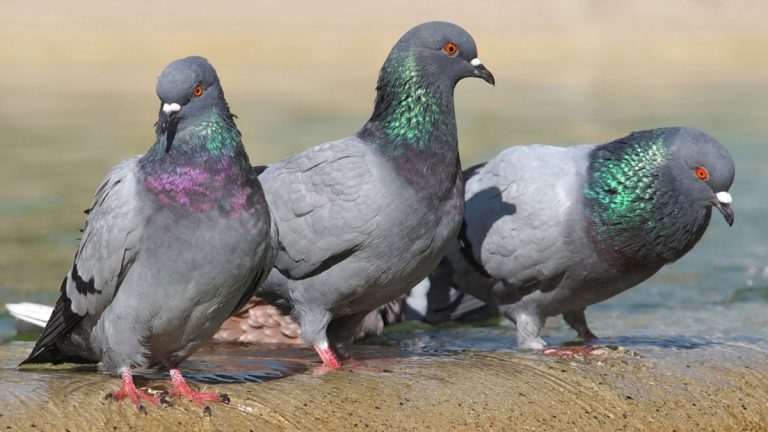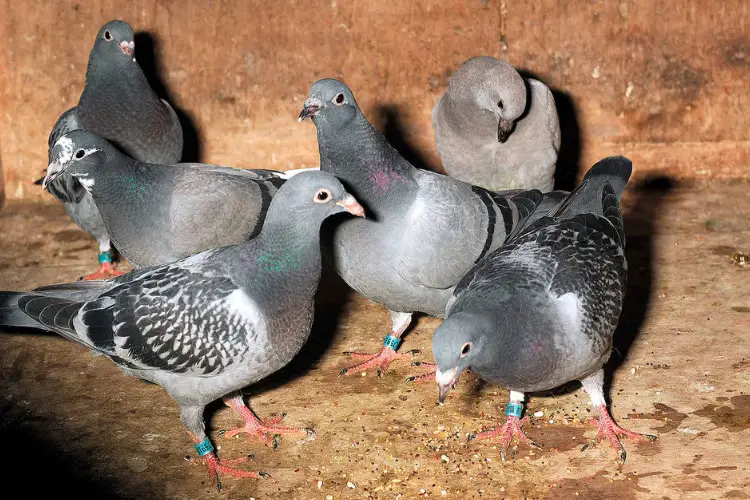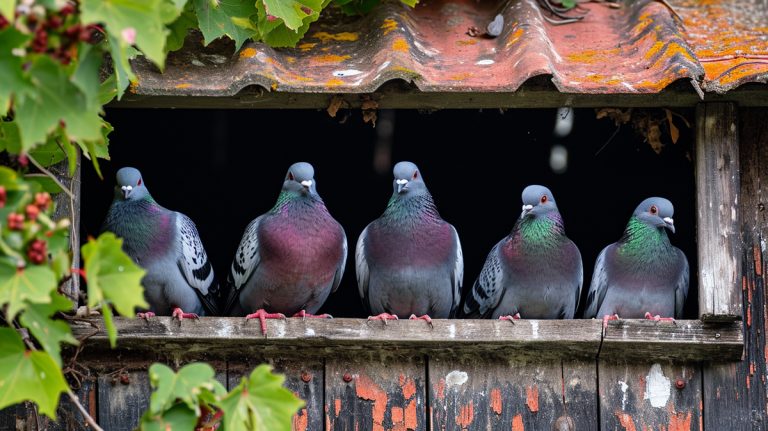Clean Pigeon Poop: A Step-by-Step Guide
If you’ve ever had the unfortunate experience of finding pigeon poop on your property, you know how frustrating and unsightly it can be. Whether it’s on your car, your windows, or your outdoor furniture, pigeon droppings can quickly become a nuisance. But fear not, because I’m here to share my expert tips on how to effectively clean pigeon poop and restore your surroundings to their former glory.
Cleaning pigeon poop may seem like a daunting task, but with the right approach, it can be a breeze. In this article, I’ll walk you through step-by-step instructions on how to safely and efficiently remove pigeon droppings from various surfaces. From the right tools and techniques to eco-friendly cleaning solutions, I’ll cover everything you need to know to tackle this messy problem head-on.
So, if you’re ready to bid farewell to those pesky pigeon droppings and regain the cleanliness of your property, let’s dive in and discover the best ways to clean pigeon poop effectively. Trust me, you’ll be amazed at how simple and effective these methods can be.
Why Cleaning Pigeon Poop is Important
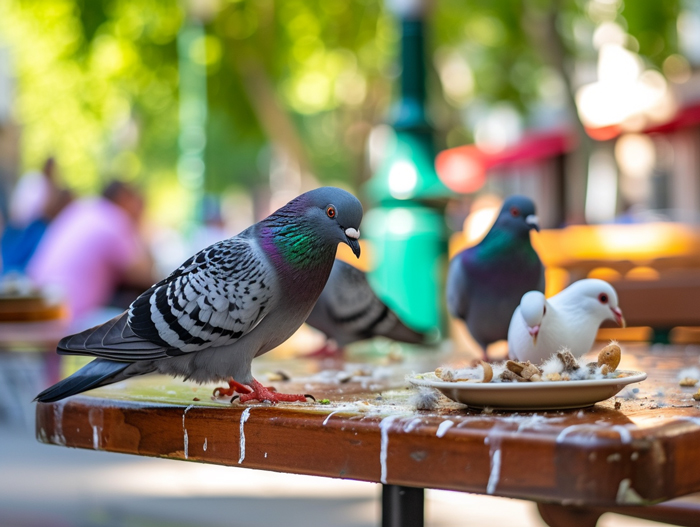
As someone who has dealt with the frustration and unsightliness of pigeon poop on my property, I understand the importance of keeping it clean. Pigeon droppings not only detract from the aesthetic appeal of your space, but they can also pose health and safety risks. In this section, I want to highlight why cleaning pigeon poop is essential.
- Health Hazards: Pigeon droppings contain various bacteria, fungi, and parasites that can be harmful to human health. These microorganisms can cause respiratory issues, skin irritations, and even diseases like histoplasmosis and cryptococcosis. By regularly cleaning the area, you can minimize the risk of exposure to these potentially dangerous pathogens.
- Property Damage: Pigeon poop is highly acidic and can corrode and stain surfaces over time. If left untreated, it can damage your building’s facade, windows, and other structures. Regular cleaning helps prevent the deterioration of these surfaces and saves you from costly repairs and maintenance.
- Attracting More Pigeons: A buildup of pigeon waste can create an inviting environment for more pigeons to roost and nest on your property. This can lead to an increase in breeding and population, exacerbating the problem further. By promptly cleaning the droppings, you discourage pigeons from finding your property as an attractive roosting spot.
- Enhancing Property Value: A clean and well-maintained property enhances its overall value and appeal. Whether you’re a homeowner looking to maintain your property’s attractiveness or a business owner aiming to create a positive impression on customers, maintaining a clean environment free from pigeon poop is crucial.
- Improving Aesthetics: Let’s face it, pigeon droppings are unsightly. They can make your property look neglected and unappealing. Regular cleaning not only removes the unsightly mess but also improves the overall aesthetics of your space, making it more inviting and enjoyable.
Understanding the importance of cleaning pigeon poop is vital for maintaining a safe, attractive, and healthy environment. By regularly cleaning the droppings, you can protect your health, prevent property damage, discourage pigeons from nesting, enhance property value, and improve the overall aesthetics of your space. So, don’t underestimate the significance of keeping your property free from pigeon poop.
Understanding the Dangers of Pigeon Poop
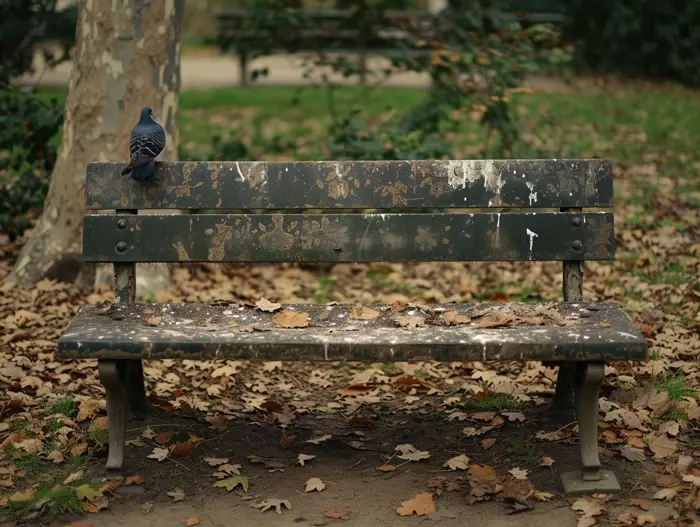
Pigeon poop may seem harmless, but it can actually pose several dangers. In this section, I’ll discuss the potential hazards associated with pigeon droppings and why it’s crucial to address them promptly.
- Health Hazards: Exposure to pigeon poop can lead to various health issues. The droppings can contain harmful bacteria, fungi, and parasites that can cause serious illnesses. For example, Histoplasma capsulatum, a fungus found in pigeon droppings, can lead to respiratory problems when its spores are inhaled. This is particularly risky for individuals with weakened immune systems, young children, and the elderly.
- Property Damage: Pigeon poop is not only unsightly but can also cause damage to buildings and structures. The acidic nature of the droppings can corrode metal surfaces, deteriorate paint, and even weaken the structural integrity of buildings over time. The longer the droppings remain on surfaces, the greater the risk of irreversible damage.
- Attracting More Pigeons: One of the major concerns with pigeon poop is that it acts as a magnet for more pigeons. Pigeons are drawn to areas where their droppings accumulate because they perceive it as a safe and comfortable spot. The presence of pigeons can lead to further accumulation of droppings, increase the risk of health hazards, and create a nuisance for property owners.
- Aesthetics and Property Value: The unsightly appearance of pigeon droppings can significantly impact the aesthetics of a property. Accumulated droppings on windowsills, ledges, and roofs can give an impression of neglect and detract from the overall appeal of the surroundings. This can lower property values, discourage potential buyers or tenants, and create a negative perception of the area.
It is crucial to understand the dangers associated with pigeon poop. From potential health hazards to property damage and attracting more pigeons, the risks should not be underestimated. Regular cleaning and preventive measures are essential to ensure a safe and aesthetically pleasing environment.
Gathering the Right Tools for the Job
When it comes to cleaning up pigeon poop, having the right tools can make the task much easier and more efficient. As someone who has dealt with this issue before, I’ve learned that there are a few essential items you’ll want to have on hand. Let me share with you my list of must-have tools for the job:
- Protective Gear: Before you start cleaning, it’s important to prioritize your safety. I recommend wearing gloves, goggles, and a face mask to shield yourself from any potential health hazards. Pigeon droppings can contain harmful bacteria, so taking these precautions is vital.
- Cleaning Solution: An effective cleaning solution is key to tackling pigeon poop stains. I’ve found that a mixture of water and mild dish soap works well. It’s important to use a non-toxic solution to minimize potential harm to yourself, the environment, and any surfaces you’re cleaning.
- Scrub Brush: A sturdy scrub brush with bristles that won’t damage surfaces is essential for scrubbing away dried-on droppings. Look for one with a comfortable grip to help make the cleaning process more manageable.
- Bucket or Spray Bottle: Depending on your preference, you can use either a bucket or a spray bottle to hold your cleaning solution. A bucket allows for larger batches of the solution, while a spray bottle offers more control and precision when applying the solution.
- Old Towels or Rags: Having absorbent materials on hand is helpful for wiping away excess cleaning solution and moisture from surfaces. You can use old towels or rags that you don’t mind getting dirty.
- Scoop or Dustpan: For outdoor clean-up, a scoop or a dustpan will come in handy for collecting and disposing of the loosened droppings. Make sure to use a dedicated scoop or dustpan specifically for this task to avoid cross-contamination.
By gathering these essential tools, you’ll be prepared to tackle the task of cleaning pigeon poop effectively and efficiently. Remember, it’s essential to prioritize your safety and take proactive measures to prevent any potential health risks. Stay tuned for the next section, where I’ll guide you through the step-by-step process of cleaning pigeon poop.
Step-by-Step Guide: How to Clean Pigeon Poop from Different Surfaces

Cleaning up pigeon poop may seem like a daunting task, but with the right approach and tools, it can be done efficiently. Here is a step-by-step guide to help you effectively clean pigeon poop from different surfaces:
- Protect yourself
- Gather the necessary tools
- Remove the initial waste
- Prepare the cleaning solution
- Apply the cleaning solution
- Rinse the area
- Dry the surface
Remember, proper protection and thorough cleaning are key when it comes to dealing with pigeon poop. By following these steps, you can effectively clean pigeon poop from different surfaces and create a safer and cleaner environment. Happy cleaning!
Removing Pigeon Poop from Cars
When it comes to cleaning pigeon poop from cars, there are a few important steps to follow. As someone who has dealt with this issue before, I can assure you that with the right approach, you can restore your car’s cleanliness and avoid any potential damage to the paint.
Step 1: Gather Your Materials
Before you begin the cleaning process, make sure you have the following items on hand:
- Gloves: Protect your hands from bacteria and germs.
- Bucket of water: Use lukewarm water for best results.
- Mild dish soap: Mix a small amount of soap into the water to create a cleaning solution.
- Soft sponge or microfiber cloth: These materials are gentle on your car’s surface.
- Hose or bucket of clean water: You’ll need this for rinsing.
- Towels: Use them to dry your car after cleaning.
Step 2: Remove the Poop
First things first, you’ll want to remove as much of the pigeon poop from your car as possible. Here’s how you can do it:
- Carefully scrape off any excess poop using a plastic card or a similar object.
- Be gentle and avoid applying too much pressure to prevent scratching the paint.
Step 3: Clean the Affected Area
Once you’ve removed the poop, it’s time to clean the area thoroughly to ensure all traces are gone. Follow these steps:
- Soak your sponge or cloth in the cleaning solution you prepared earlier.
- Gently scrub the affected area, making sure to cover the entire poop stain.
- Rinse the sponge or cloth regularly to avoid spreading the poop around.
- If necessary, repeat the process until the area is clean and free of any residue.
Step 4: Rinse and Dry
After cleaning the affected area, it’s important to rinse and dry your car properly. Here’s what you need to do:
- Use a hose or a bucket of clean water to thoroughly rinse off the cleaning solution.
- Make sure all soap residue is removed to prevent any potential damage to your car’s surface.
- Dry your car using clean towels. Pat the surface gently to avoid any scratches or marks.
Cleaning Pigeon Poop from Windows

When it comes to cleaning pigeon poop from windows, it’s important to act fast to prevent any damage to the glass surface. Here’s a step-by-step guide on how to effectively clean pigeon poop from windows:
- Put on Protective Gear: Before you start cleaning, make sure to protect yourself. Wear gloves, a mask, and goggles to avoid any direct contact with the poop, as it may harbor harmful bacteria or parasites.
- Gather the Necessary Materials: Collect all the materials you’ll need for the cleaning process. This includes a bucket, mild dish soap or a specialized bird droppings cleaner, a soft sponge or cloth, and clean towels.
- Remove the Pigeon Poop: Carefully scrape off the dried poop using a plastic scraper or old credit card. Be gentle to avoid scratching or damaging the glass. Dispose of the poop in a sealed plastic bag.
- Prepare the Cleaning Solution: Fill the bucket with warm water and add a few drops of mild dish soap or the specialized bird droppings cleaner. Mix well until the solution forms a soapy consistency.
- Clean the Window: Dip the soft sponge or cloth into the cleaning solution and gently scrub the affected area. Start from the edges and work your way towards the center. Use circular motions to loosen any remaining residue.
- Rinse and Dry: Rinse the window thoroughly with clean water to remove any soap residue. Dry the glass surface using clean towels, ensuring there are no streaks left behind.
Remember, if you’re dealing with a large infestation or heavily soiled windows, it’s best to seek professional assistance. They have the knowledge and tools to handle such situations effectively.
Cleaning pigeon poop from windows may seem like a daunting task, but by following these steps, you can ensure a clean and streak-free window. Take the necessary precautions, gather your materials, and enjoy clear and unobstructed views once again.
When it comes to outdoor furniture, it’s not uncommon to find pigeon poop on them. As unsightly and unhygienic as it may be, cleaning pigeon poop from outdoor furniture is a manageable task. Here’s a step-by-step guide on how to do it effectively:
Dealing with Pigeon Poop on Outdoor Furniture
Before you start cleaning the pigeon poop, make sure you have the following materials ready:
- Disposable gloves
- Plastic scraper or putty knife
- Mild cleaning solution (mix warm water and gentle dish soap)
- Soft brush or sponge
- Bucket of clean water
- Clean towels or rags
Step 1: Protect yourself
Put on the disposable gloves to protect your hands from coming into direct contact with the pigeon poop. This will help prevent the spread of any bacteria or diseases that may be present.
Step 2: Remove the poop carefully
Using the plastic scraper or putty knife, gently scrape off as much of the pigeon poop as possible. Be careful not to press too hard or scrape the surface of the furniture. Dispose of the poop in a plastic bag or garbage bin.
Step 3: Clean the affected area
Dip the soft brush or sponge into the mild cleaning solution and gently scrub the area where the pigeon poop was. Use circular motions and ensure that the cleaning solution covers the entire affected area.
Step 4: Rinse and dry
After cleaning the area, rinse it thoroughly with clean water. This will help remove any remaining residue or cleaning solution. Once rinsed, use the clean towels or rags to dry the furniture completely.
Remember, it’s important to clean pigeon poop from outdoor furniture as soon as possible to prevent staining and the accumulation of bacteria. Regular maintenance and cleaning can help keep your outdoor furniture looking its best.
Seeking professional assistance
If you’re dealing with a large infestation of pigeons or have heavily soiled areas that are difficult to clean, it’s advisable to seek professional assistance. Professional pest control services can help deal with the problem effectively and ensure that your outdoor furniture remains clean and safe.
By following these steps and taking the necessary precautions, you can keep your outdoor furniture free from pigeon poop and create a clean and welcoming outdoor space. Stay proactive and maintain the cleanliness of your outdoor furniture for maximum enjoyment.
Eco-Friendly Cleaning Solutions for Pigeon Poop
When it comes to cleaning pigeon poop, using eco-friendly solutions can help protect both the environment and your health. Here are some effective and safe cleaning options to consider:
1. Vinegar solution
Vinegar is a natural and versatile cleaner that can effectively remove pigeon poop stains and odors. To make a vinegar cleaning solution, mix equal parts water and white vinegar in a spray bottle. Spray the solution onto the affected area, let it sit for a few minutes, and then scrub gently with a soft brush or sponge. Rinse the area thoroughly afterward.
2. Baking soda paste
Baking soda is another eco-friendly option that can help break down pigeon poop stains. Create a paste by mixing baking soda with a small amount of water. Apply the paste onto the affected area and let it sit for a few minutes. Scrub the area gently with a brush or sponge, and then rinse well.
3. Hydrogen peroxide solution
Hydrogen peroxide is a powerful yet environmentally-friendly cleaner that can effectively remove stains and disinfect the affected area. Mix equal parts hydrogen peroxide and water in a spray bottle, and then apply it to the stained area. Let the solution sit for a few minutes, scrub gently, and rinse thoroughly.
4. Lemon juice
Lemon juice is a natural acid that can break down pigeon poop stains and leave a fresh scent behind. Squeeze fresh lemon juice onto the stained area and let it sit for a few minutes. Scrub gently with a brush or sponge, and then rinse thoroughly.
Remember, always protect yourself when cleaning pigeon poop by wearing gloves, a mask, and protective eyewear. Dispose of the cleaning materials properly and wash your hands thoroughly afterward.
By using these eco-friendly cleaning solutions, you can effectively remove pigeon poop while minimizing the impact on the environment.
Preventing Pigeons from Roosting: Tips and Techniques
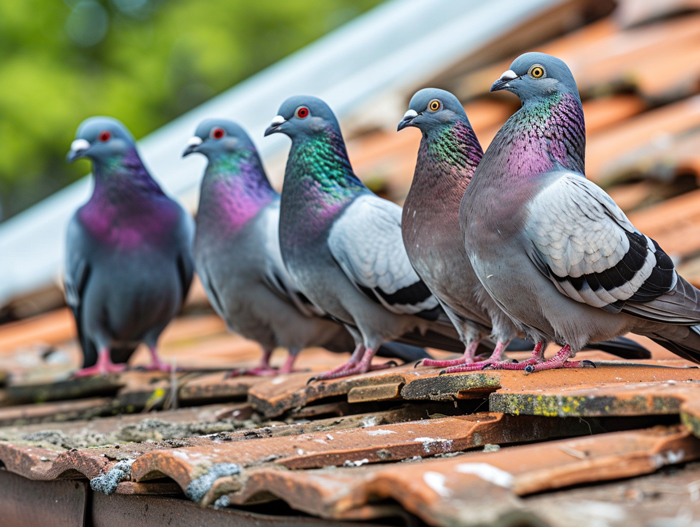
Pigeons are persistent birds that often choose to roost in places they shouldn’t, causing a mess with their droppings. To prevent pigeons from roosting and keep your surroundings clean, here are some effective tips and techniques you can try:
- Remove Food Sources: Pigeons are attracted to food, so eliminating any food sources can discourage them from roosting. Make sure to seal trash cans tightly, clean up spilled food promptly, and avoid feeding them intentionally.
- Block Entry Points: Pigeons like to find sheltered areas to roost, so it’s important to block any potential entry points to your property. Inspect your windows, vents, and eaves for any openings, and seal them with wire mesh or other suitable materials to keep pigeons out.
- Bird Deterrents: There are various bird deterrents available that can make your property less attractive to pigeons. Consider installing bird spikes or bird netting in areas where pigeons like to roost, such as ledges, rooftops, and balconies.
- Scare Tactics: Pigeons are cautious birds, and they can be easily scared away by certain tactics. Try using visual deterrents like reflective surfaces or scare balloons, or use sound deterrents such as ultrasonic devices or bird distress calls.
- Maintain Cleanliness: Regular cleaning and maintenance of your property can help prevent pigeons from roosting. Keep outdoor areas clear of debris, trim overgrown vegetation, and clean up any standing water that could attract pigeons.
By implementing these tips and techniques, you can discourage pigeons from roosting and keep your surroundings clean and pigeon-free. Remember to take into consideration local regulations and any restrictions on bird control methods before applying them.
Keep in mind that it’s crucial to approach pigeon control with care and in an eco-friendly manner. Avoid using harmful chemicals or traps that could harm not only the pigeons but also other wildlife. It’s important to strike a balance between maintaining a clean environment and being mindful of the well-being of all creatures.
Remember, an ounce of prevention is worth a pound of cure when it comes to preventing pigeons from roosting. Stay vigilant, take proactive measures, and enjoy a pigeon-free environment.
Conclusion
By following the step-by-step guide provided in this article, you can effectively clean pigeon poop from various surfaces, including outdoor furniture. It is crucial to prioritize your safety by wearing protective gear and gathering the necessary materials before starting the cleaning process.
Using a cleaning solution and a soft brush or sponge, carefully remove the pigeon poop and clean the affected area. Rinse the area thoroughly and dry it with clean towels. For those who prefer eco-friendly options, vinegar solution, baking soda paste, hydrogen peroxide solution, and lemon juice can be effective alternatives.
Remember, it is essential to approach pigeon control in an eco-friendly manner. By removing food sources, blocking entry points, using bird deterrents, employing scare tactics, and maintaining cleanliness, you can prevent pigeons from roosting in the first place.
By using these eco-friendly cleaning solutions and adopting preventive measures, you can effectively clean pigeon poop while minimizing the impact on the environment. Let’s strive to create a clean and safe environment for all creatures.
